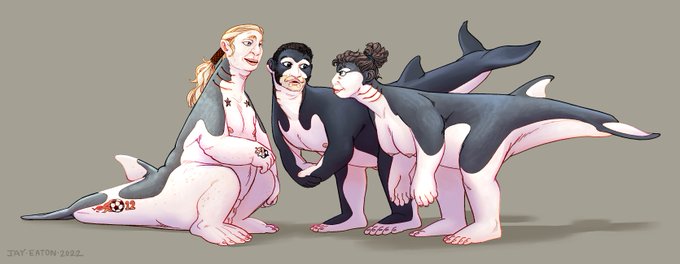pleistoceneのTwitterイラスト検索結果。 173 件
The bush-antlered deer (Eucladoceros dicaranios) from the early Pleistocene of Europe & Asia.
(Credit Satoshi Kawasaki)
Day 30: Glyptodon clavipes
This gigantic, car-sized armadillo lived in the late Pleistocene epoch in Argentina. They also likely used their armored, spiked tails to whack each other in intraspecific combat!
#marchofthemammals2023 #armadillo #paleoart #digitalart
For #FossilFriday and #StPatricksDay2023 , here we have #Megaloceros , the Irish Elk (neither exclusive to Ireland nor an elk, though)!
.
#iceage #pleistocene #deer #paleontology #Procreate #ArtistOnTwitter
For today’s #FossilFriday , Miracinonyx, the American Cheetah!
.
#IceAge #pleistocene #paleoart #cheetah #paleontology #Procreate #ArtistOnTwitter
Enhydriodon is the largest otter species to have ever existed, going extinct in the early Pleistocene.
MEGANTEREON SP.
The Dirk-toothed Megantereon is usually associated with Pliocene and middle Pleistocene faunal assemblages. A jaw found in the Chadian site of Toros Menalla, dates the origin of Megantereon back to Late Miocene, around 7 Mya.
#paleoart #megantereon
For this #FossilFriday admire this Ursus deningeri skull from the Pleistocene of Belgium I scanned on Monday in the @prehisto_museum 🇧🇪🐻
Thanks to @joerogan … #mastodon skeletons are the new #bitcoin!
.
https://t.co/4B2jN5ZrKa
.
#tee #tshirt #graphics #Pleistocene #megafauna #ivory #tusks #joeRogan #zugart #elephant #bones #fossil #permafrost #ivoryHunter #alaska #fossilHunter
Muskox (Ovibos moschatus) are a species of bovid native to the Arctic. They’ve been here a while: muskox are one of North America’s few surviving Pleistocene megafauna.
@bonechomp duuuuude the horse evolution branches is so interesting!!!
Pleistocene animals, my beloved.....
Today's warmup, an angry Platygonus, AKA a big ol' peccary, chases an American Lioness.
Inspired by @HodariNundu 's own big ol' peccary drawing and @ausar_the 's post of goofy looking scary animals.
#peccary #americanlion #paleoart #paleontology #pleistocene
Due to the Pleistocene extinction event, humans only have one natural species in their genus. However, through genetic modification new species have been created, called GMH. Shown are 4 of the largest clades: Androtherians, tailed spacers, Magpie Bridge, and Cetásereio.
Spotted Hyena
The spotted hyena, also known as the laughing hyena, is the sole member of the genus Crocuta. Spotted hyenas once ranged along most of the Eurasian continent, however since the end of the Pleistocene era they became extinct in all but Sub-Saharan Africa.
Also made it to the video, my earlier doodle of the even larger Desmodus draculae feeding on another charismatic Pleistocene mega mammal :B. Probably not the safest host!
Paleo Fact!
Agriotherium (Sour Beast) is an ursid from Miocene to Pleistocene Africa, North America and Eurasia! It was rather lightly-built for a bear, but made up for it with wide short jaws that had a rather high bite force! Based on its- (1/2)
Art by Joschua Knüppe!
#Quinkana was a Late #Oligocene to Late #Pleistocene terrestrial #crocodilian that terrorised #Australian animals and even humans. #paleoart #paleontology #crocodile
Panthera onca mesembrina
#Pleistocene #Paleoart #Sciart #conceptart #pampas #webcomic #comic
Check out this amazing collection of posters illustrating the awe inspiring animals that lived among our ancestors and relatives during the Pleistocene and Holocene.
Designs by @JoschuaKnuppe
https://t.co/l6ixr0DunV
#paleoart #paleontology #sciart
The enigmatic Pleistocene felid Panthera gombaszoegensis - not a jaguar after all? https://t.co/QuhY7QCZTo #FossilFriday @frsFNRS @ULiegeRecherche @Le_Museum @uppsalauni @africamuseumbe @MorphoSource @MorphoBank @wileyearthspace
If you consider the combination of body size and diet of the species in the ecosystem before and after the extinction, we find a depauperate ecosystem with a much reduced ecological complexity. Here is that space in the Pleistocene...



















































